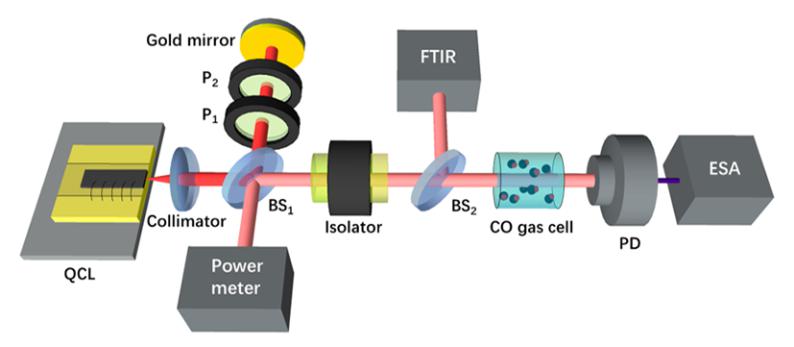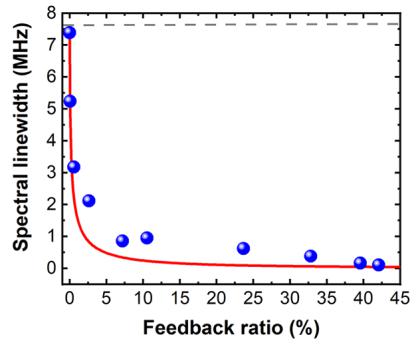In the beginning of 2020 Prof. Cheng Wang’s Group devised a method to narrow the spectral linewidth of quantum cascade lasers (QCLs), which only requires a mirror to provide light reflection. This technique narrows the laser linewidth by 70 times, and the corresponding phase noise is reduced by 4 orders of magnitude. This result is now published in the renowned journal <ACS Photonics>, titled as Strong optical feedback stabilized quantum cascade laser.
The light emission of QCLs covers the spectral range from mid-infrared to THz, and the lasers provide crucial light sources for gas sensing, free-space optical communication, and THz imaging applications. However, the linewidth of QCLs is usually on the order of MHz due to the existence of phase noise, which significantly limits the performance in the above fields. Although QCLs stabilized by frequency combs exhibit narrow linewidth, the complicated and bulky instruments limit the practical applications in the market.
Due to the residual reflection of optical components, semiconductor lasers inevitably suffer from optical feedback. Conventional semiconductor lasers are very sensitive to optical feedback, and very weak feedback can destabilize the lasers and hence substantially raises the phase noise. Consequently, commercial semiconductor lasers are usually packaged together with optical isolators to avoid any feedback. However, Cheng Wang’s group finds that: QCLs are insensitive to optical feedback, and strong optical feedback can efficiently reduce the phase noise and the spectral linewidth.


Experimental setup (left) and the result (right) of QCL's linewidth reduction using strong optical feedback
The linewidth reduction of QCLs using strong optical feedback is demonstrated in the above experimental configuration (left), where the gold mirror provides an optical feedback of about 40%. Without any feedback phase control, the spectral linewidth is reduced from about 8 MHz to about 100 kHz. Meanwhile, the corresponding phase noise is reduced by 4 orders of magnitude. The proposed technique is very robust and low cost, which is valuable for real applications in the market.
This work was entirely conducted at ShanghaiTech University, and Bin-Bin Zhao and Xing-Guang Wang are co-first authors. Prof. Cheng Wang is the corresponding author. This work is financially supported by NSFC and ShanghaiTech Startup Fund.
Article link: https://pubs.acs.org/doi/10.1021/acsphotonics.0c00189




 沪公网安备 31011502006855号
沪公网安备 31011502006855号


